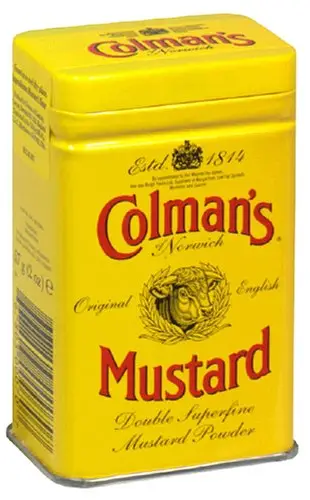
If you were sick with a cold or flu in the 20th century, your family or your doctor would have likely applied a hot mustard patch to help your body sweat out the illness. It is one of the forgotten old century cures that may have been overhyped in the past, but is making its comeback today after modern science has confirmed its surprising benefits
Using mustard seeds as medicine can be traced back to the Egyptians; seeds were even found in tombs. The creation of a mustard plaster itself – mustard seeds mixed with other ingredients in a fabric pocket applied to skin– can be credited to ancient Greeks. The Greek physician Hippocrates used these plasters to treat pneumonia, bronchitis, and rheumatism.
Some of its former uses showed little effect. Romans tried to use it as a remedy for snake and scorpion bites. And when Abraham Lincoln was shot at Ford’s Theater is 1865, mustard plasters were applied as well but did not do much to save the former president.
However, mustard plaster’s ability to fight off colds and the flu, as well as aid to relief arthritis, are well-documented benefits that are still popular in Europe today, and are now coming back to the U.S.
Unlike many modern medicines, mustard plaster has just one potential side effect to be aware of, and unlike pharmaceutical products, this remedy can be made at home.
How to make a Mustard Plaster:
There are many ways that mustard plasters can be made, but there is one recipe that is the oldest and the simplest, as it uses just three ingredients.
-8 tablespoons of flour
-1 tablespoon of dry mustard
-Warm water (enough to make a paste)
All three ingredients are mixed together until a smooth, spreadable paste is achieved.
The paste is then spread evenly across a sack towel, three sheets of cheesecloth or a cotton fabric, which is then folded (the mustard paste should never come in direct contact with skin).
How to use a Mustard Plaster:
 Mustard powder is mixed with a few simple ingredients to make mustard plasters.
Mustard powder is mixed with a few simple ingredients to make mustard plasters.
After making a mustard plaster (or purchasing a ready-to-use one online), it is applied for up to 20 minutes at a time (Ten minutes for a child older than six years old. Using it on younger children is not generally recommended unless instructed by a naturopathic doctor).
The plaster can be placed on the shoulders near the neck, the chest, the lower ribs, or the back. Place a fresh warm towel to cover the area and promote sweating.
After the procedure, remove the plaster and rinse off the skin. The procedure can be done once a day for three days.
One side effects to be aware of:
The one major thing to consider with mustard platers is that they can burn the skin if left for too long. Leaving one on for too long, especially overnight, can result in a burn and blisters.
If you are feeling concerned, take a peek under the plaster every five minutes and if the skin looks redder than it normally looks from heat, remove the plaster earlier.
Some recommend applying Vaseline to the skin after the mustard patch is removed in order to soothe it.
Mustard Plaster’s Uses and Health Benefits
Mustard plasters work by generating heat and bringing more blood flow and circulation to the affected area. It can help loosen phlegm, clear congestion, and stimulate cough. The heat also helps to fight off infections and brings down the body’s temperature during fever through sweating.
Mustard seeds also have anti-inflammatory properties, which is why they are commonly used to treat arthritis pain and other kinds of pain.
Lastly, mustard has detoxifying abilities and is effective as drawing toxins out of the body.
To summarize, here are the ailments that mustard plasters can help with:
-flu
-cough
-cold
-sore muscles
-arthritis
-back pain
-poor circulation
-fever
-inflammation
Other Methods: Mustard Poultice and Mustard Baths as Used by Olympic Athletes
A Mustard poultice is another way to apply mustard seeds to the body to generate heat. Unlike mustard plaster, which only requires flour and water, a poultice needs a carrier: hot oatmeal, flaxseeds, or starch.
A carrier helps retain heat. Because a poultice has a lower ratio of mustard seeds to other ingredients, it may be applied for a longer periods of time.
Mustard poultices are not as popular as mustard plasters.
But there is one more mustard use that has gained its most popularity in the 21st century, and that is a mustard bath.
A mustard bath is created by adding mustard seeds and essential oils to a hot water bath for a muscle-soothing experience.
Dr. Benjamin Alman of Duke University Medical School said that it may be a new way to use an old therapy.
A mustard bath is also popular therapy used by Olympic Swimmer Natalie Coughlin.
A Mustard Bath remedy can be purchased online to add directly to hot bath water or a foot soak. A mustard bath, just like mustard plasters, is recommended for only up to 20 minutes at a time.
Watch video instructions on how to make a mustard plaster:
This article is for informational purposes only and does not constitute medical advice. Consult a licensed doctor if you have any symptoms like those mentioned above.
Additional reading:
Everything You Need To Know About Golden Paste and How To Make It
Everything You Need To Know About Black Garlic (Including Health Benefits) — Plus How To Make It
Thanks for installing the Bottom of every post plugin by Corey Salzano. Contact me if you need custom WordPress plugins or website design.




